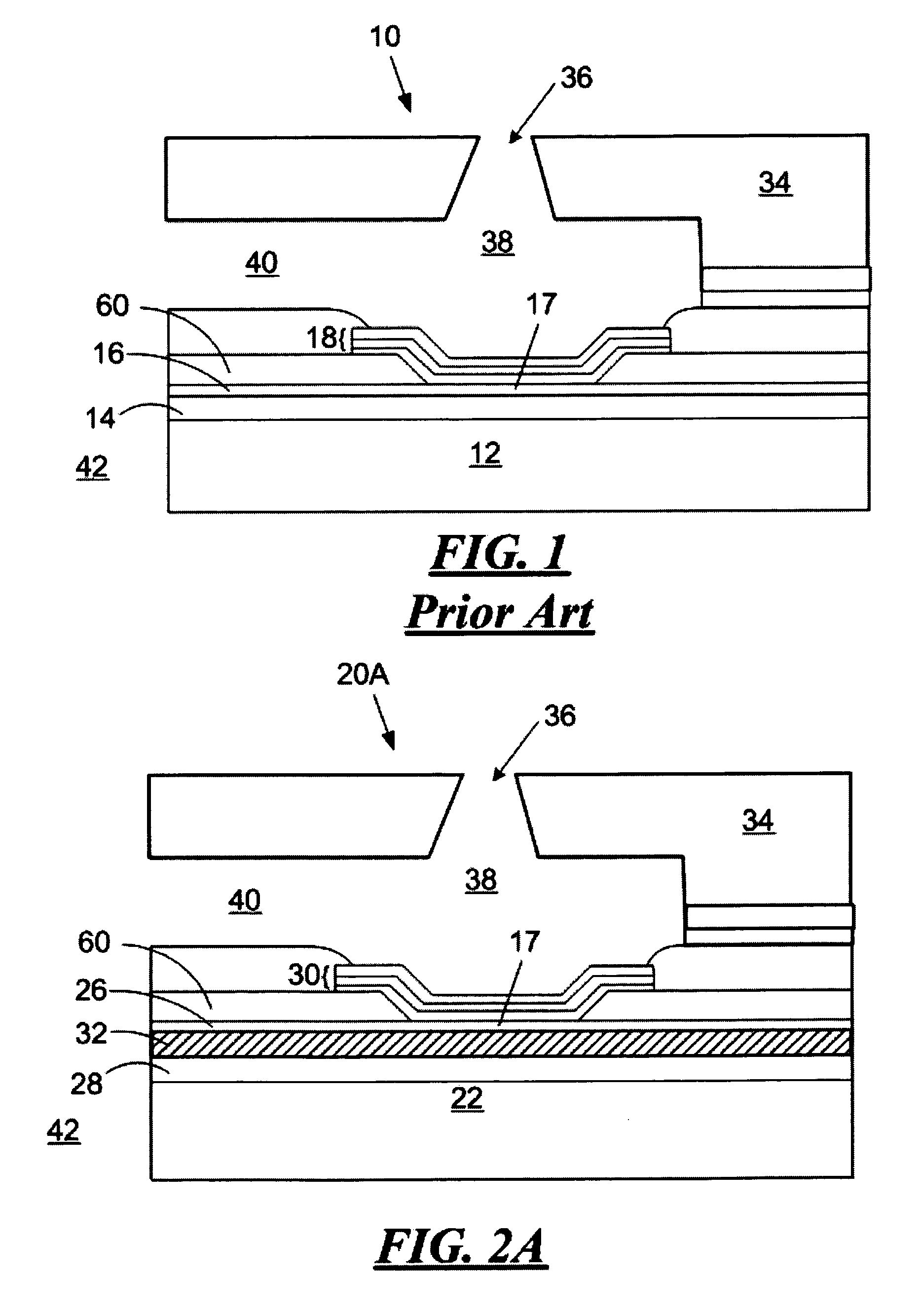Reduction of heat loss in micro-fluid ejection devices
a technology of microfluid ejection and heat loss reduction, which is applied in the direction of printing, etc., can solve the problems of unsatisfactory and potentially damaging overheating of increased heat generated in the microfluid ejection head, and damage to delicate semiconductor structures in the substrate. , to achieve the effect of reducing energy consumption, minimizing heat loss, and reducing the energy consumption of the fluid ejector actuator
- Summary
- Abstract
- Description
- Claims
- Application Information
AI Technical Summary
Benefits of technology
Problems solved by technology
Method used
Image
Examples
Embodiment Construction
[0019]Referring now to FIGS. 2A-2C, micro-fluid ejection heads 20A-20C according to exemplary embodiments of the present disclosure are illustrated. Each of the ejection heads 20A-20C may include an ejector actuator 17, such as resistance heaters, made using conventional semi-conductor manufacturing techniques such as chemical vapor deposition (CVD), sputtering, spinning, physical vapor deposition (PVD), etching and the like. The ejection actuators may also be provided by other micro-fluid ejection devices, such as piezoelectric actuators. The ejection heads 20A-20C of the exemplary embodiments advantageously incorporate a low thermal diffusivity film between the ejector actuator 17 and the underlying semiconductor substrate 22 to advantageously inhibit heat loss from activation of the fluid ejector actuator 17.
[0020]Referring now to FIG. 2A, there is shown a fluid ejection head 20A for use in a micro-fluid ejection device. The ejection head 20A includes a semiconductor substrate 22...
PUM
 Login to View More
Login to View More Abstract
Description
Claims
Application Information
 Login to View More
Login to View More - R&D
- Intellectual Property
- Life Sciences
- Materials
- Tech Scout
- Unparalleled Data Quality
- Higher Quality Content
- 60% Fewer Hallucinations
Browse by: Latest US Patents, China's latest patents, Technical Efficacy Thesaurus, Application Domain, Technology Topic, Popular Technical Reports.
© 2025 PatSnap. All rights reserved.Legal|Privacy policy|Modern Slavery Act Transparency Statement|Sitemap|About US| Contact US: help@patsnap.com



